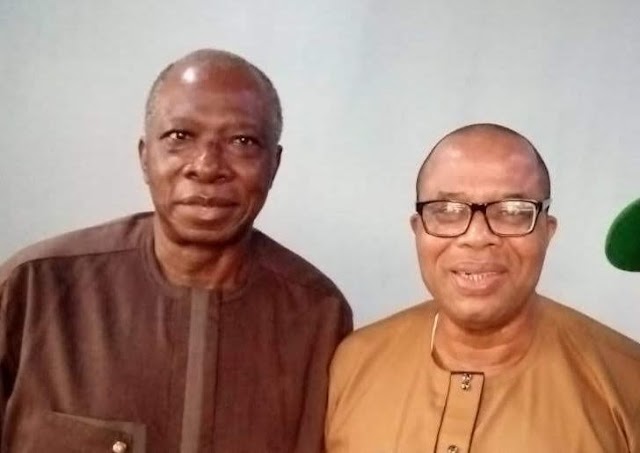Total internal reflection allows the light to travel down the optical fiber and not pass through the sides of the tube. The light continuously reflects from the inside of the tube and eventually comes out the end. Optical fibers make interesting lamps but they are also used to transport telephone and television signals.
Total Internal Reflection
We already know that when light passes from one medium into a second medium where the index of refraction is smaller, the light refracts away from the normal.
In the image below, the light rays are passing into an optically less dense medium; therefore, the rays bend away from the normal. As the angle of incidence increases, the light ray bends even further away from the normal. Eventually, the angle of incidence will become large enough that the angle of refraction equals
Consider a ray of light passing from water into air. The index of refraction for air is 1.00 and for water is 1.36. Using Snell’s Law,
This result tells us that when light is passing from water into air, if the angle of incidence exceeds
Total internal reflection is the principle behind fiber optics. A bundle of fibers made out of glass or plastic only a few micrometers in diameter is called a light pipe since light can be transmitted along it with almost no loss. Light passing down the fibers makes glancing collisions with the walls so that total internal reflection occurs.
Use the Diamond Cut simulation below to adjust the shape of a diamond with the three sliders related to depth, crown, and table size. Try to find a combination of sliders for which the light is trapped inside - achieving total internal reflection - and a very sparkly diamond!
Summary
- When light passes from one medium into a second medium with a smaller index of refraction, the light refracts away from the normal.
- If the angle of incidence becomes large enough that the angle of refraction equals
90∘ , the light ray will not enter the new medium with the smaller angle of refraction. - Total internal reflection means the light ray will not enter the new medium but will be completely reflected back into the original medium.
Review
- Find the critical angle for light passing from diamond into air, given
ndiamond=2.42 . - When two swimmers are under water in a swimming pool, it is possible for the interface between the water and the air to act as a mirror, allowing the swimmers to see images of each other if they look up at the underside of the surface. Explain this phenomenon.
- Robert shines a laser beam through a slab of plastic and onto the interface between the slab of plastic and the air on the other side. The index of refraction for the plastic is 1.62. If the angle of incidence in the plastic is
54∘ , will the laser beam pass out of the plastic into the air?
Mirrors are made from highly reflective metal that is applied to a curved or flat piece of glass. Converging mirrors can be used to focus light – headlights, telescopes, satellite TV receivers, and solar cookers all rely on this principle. Converging mirrors (also known as concave mirrors) are curved towards the incoming light and focus parallel rays at the focal point. Diverging mirrors (also known as convex mirrors) are curved away from the incoming light and do not focus, but scatter the light instead.
The focal length,
When light rays converge in front of a mirror, a real image is formed. Real images are useful in that you can place photographic film at the physical location of the real image, expose the film to the light, and make a two-dimensional representation of the world, a photograph.
When light rays diverge in front of a mirror, a virtual image is formed. A virtual image is formed by your brain tracing diverging rays backwards and is kind of a trick, like the person you see “behind” a mirror’s surface when you brush your teeth (there's obviously no real light focused behind a mirror!). Since virtual images aren’t actually “anywhere,” you can’t place photographic film anywhere to capture them.
Real images are upside-down, or inverted. You can make a real image of an object by putting it farther from a mirror or lens than the focal length. Virtual images are typically right-side-up. You can make virtual images by moving the mirror or lens closer to the object than the focal length.
Key Equations
Where f is the focal length of the mirror,
The size of an object’s image is larger (or smaller) than the object itself by its magnification,
The radius of curvature of a mirror is twice its focal length
In the problems below that considers converging or diverging mirrors, you will do a careful ray tracing with a ruler (including the extrapolation of rays for virtual images). It is best if you can use different colors for the three different ray tracings. When sketching diverging rays, you should use dotted lines for the extrapolated lines behind a mirror in order to produce the virtual image. When comparing measured distances and heights to calculated distances and heights, values within 10% are considered “good.” Use the Table (below) as your guide.
| Mirror type | Ray tracings |
|---|---|
Converging mirrors (concave) | Ray #1: Leaves tip of candle, travels parallel to optic axis, reflects back through focus. Ray #2: Leaves tip, travels through focus, reflects back parallel to optic axis. Ray #3: Leaves tip, reflects off center of mirror with an angle of reflection equal to the angle of incidence. |
Diverging mirrors (convex) | Ray #1: Leaves tip, travels parallel to optic axis, reflects OUTWARD by lining up with focus on the OPPOSITE side as the candle. Ray #2: Leaves tip, heads toward the focus on the OPPOSITE side, and emerges parallel to the optic axis. Ray #3: Leaves tip, heads straight for the mirror center, and reflects at an equal angle. |
Example
In the situation illustrated below, the object is set up .5 m away from a converging mirror. If the focal length of the lens is .2 m, determine (a) the location of the real image, and (b) the magnification of the image.
(a): In order to determine the location of the image, we'll use the lens maker's equation.
(b): Now that we have the location of the image, we can find the magnification.
Interactive Simulation
Review
- Here’s an example of the “flat mirror problem.” Marjan is looking at herself in the mirror. Assume that her eyes are 10 cm below the top of her head, and that she stands
180cm tall. Calculate the minimum length flat mirror that Marjan would need to see her body from eye level all the way down to her feet. Sketch at least3 ray traces from her eyes showing the topmost, bottommost, and middle rays. - Consider a concave mirror with a focal length equal to two units, as shown below.
- Carefully trace three rays coming off the top of the object in order to form the image.
- Measure
do anddi . - Use the mirror/lens equation to calculate
di . - Find the percent difference between your measured
di and your calculateddi . - Measure the magnification
M and compare it to the calculated magnification.
- Consider a concave mirror with unknown focal length that produces a virtual image six units behind the mirror.
- Calculate the focal length of the mirror and draw an
× at the position of the focus. - Carefully trace three rays coming off the top of the object and show how they converge to form the image.
- Does your image appear bigger or smaller than the object? Calculate the expected magnification and compare it to your sketch.
- Calculate the focal length of the mirror and draw an
- Consider a convex mirror with a focal length equal to two units.
- Carefully trace three rays coming off the top of the object and form the image.
- Measure
do anddi . - Use the mirror/lens equation to calculate
di . - Find the percent difference between your measured
di and your calculateddi . - Measure the magnification
M and compare it to the calculated magnification.
- Above is a diagram showing how to make a “ghost light bulb.” The real light bulb is below the box and it forms an image of the exact same size right above it. The image looks very real until you try to touch it. What is the focal length of the concave mirror?
Review (Answers)
85cm - C.
+4 units e.M=−1 - a.
6 units c. bigger;M=3 - c.
1.5 units e.M=2/3 32cm
















0 Comments